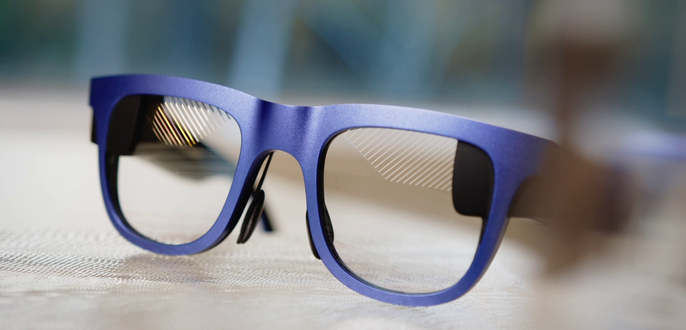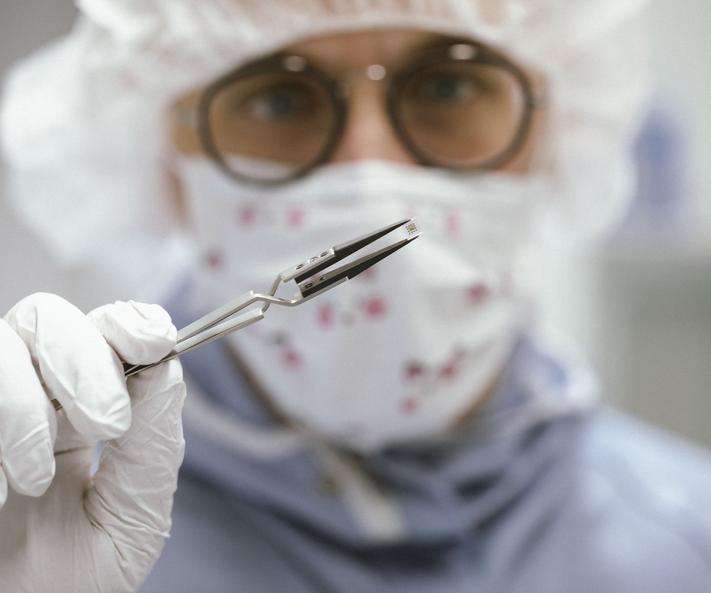
Revolutionizing healthcare with augmented reality
Facing surgery can be nerve-wracking, but new technologies like AR and VR are transforming patient experiences and medical practices. Companies like SCHOTT are at the forefront of this revolution, creating advanced optical components that make these technologies more accessible and effective in healthcare settings. Discover how AR and VR are poised to revolutionize the medical field and improve patient outcomes.
It won’t be long before Augmented and Virtual Reality become everyday tools utilized by doctors, nurses, surgeons, and even patients.
- AR and VR technologies have the potential to significantly enhance medical training, diagnostics, surgical planning, and patient education in healthcare.
- By overlaying digital information onto the real world or creating immersive simulations, the technologies can improve patient understanding, reduce anxiety, and could help medical practices implement seamless displays of patient data and diagnostic imaging during procedures.
- Some doctors, like dental surgeon Dr. Jennifer Silver, have already adopted the technology into their practices and are excited for what the future holds.
- Companies like SCHOTT are advancing AR technology in healthcare by developing high-quality, scalable optical components for AR devices, ensuring they are lightweight, ergonomic, and integrate seamlessly with clinical workflows.
There are few moments in life packed with more anxiety than those spent in a hospital gown and hairnet, waiting for the nurse to wheel you into the operating room for surgery. Fear of the unknown sends the mind racing... What happens if I wake up? What happens if something goes wrong? What is even happening during the surgery? Sure, the doctor might’ve explained the procedure in general terms, but truly understanding exactly what is about to happen is impossible to grasp.
As a dental surgeon for over ten years, Dr. Jennifer Silver has faced no shortage of clammy hands and irrational questions. But now, with the help of an unexpected perhaps-unexpected technological innovation, the surgeon is slowly but surely making pre-op nerves a thing of the past.
“I had one patient about to undergo a complex dental implant procedure,” explains Jennifer, owner and practitioner at the Macleod Trail Dental clinic in Calgary, Canada. “She was very nervous about the safety and outcome of the procedure and didn’t trust the accuracy of animated simulations we provided.”
To ease her patient’s nerves, Jennifer created a detailed 3D model of her jawbone, then overlayed it with the planned implant procedure.
“She wore augmented reality glasses as we walked through the entire procedure, step-by-step,” Jennifer explains. “Immersed in augmented reality, she was allowed to see exactly how we would navigate around critical structures and how the implant would fit into her jawbone.”
The visual walkthrough “helped her understand the process better,” the doctor continues. “It simplified complex medical terms and procedures down to images that were much easier to digest, which built confidence and significantly reassured her about the procedure's safety and outcome.”
Watching her patients’ fear and anxiety melt away with the help of augmented reality (AR) lenses has been a “transformative experience,” Jennifer says. And improving patient comfort and education is just one of the many reasons AR, and virtual reality (VR), stand on the precipice of revolutionizing the healthcare industry.
Meet Dr. Jennifer Silver
Dr. Silver's journey in dentistry began with her Doctor of Dental Surgery degree from the University of Melbourne, Australia. As the owner of Macleod Trail Dental, Dr. Silver oversees all aspects of the clinic's operations, ensuring that patients receive the highest quality care in a comfortable and welcoming environment. She is also actively involved in clinical practice, where she demonstrates her commitment to excellence in dentistry.

The promise of AR and VR in healthcare

Augmented reality allows healthcare professionals to visualize complex medical data in their field of view.
“AR will change how we communicate, how we learn, and how we consume any digital content in the context of the real world,” says Rüediger Sprengard, Head of Augmented Reality at SCHOTT. It is difficult to overstate the potential of AR and VR might have on the world as we know it – let alone on the medical field.
These technologies offer immersive, interactive experiences that can significantly improve medical training, diagnostics, surgical planning, and patient care. AR, which overlays digital information onto the real world, allows healthcare professionals to visualize complex medical data directly in their field of view. This can enhance precision during surgeries, improve diagnostic accuracy, and facilitate better patient outcomes.
VR, on the other hand, creates entirely virtual environments that can provide invaluable training and simulations that enable users to practice procedures in a risk-free setting.
Eight ways AR is transforming healthcare today
Thanks to recent technological advances, we’re just beginning to understand how AR and VR will impact global health. However, producing these technologies at a scale and cost that makes them accessible to a broader audience has been a significant hurdle. And without the ability to scale, to reach the hands of surgeons, doctors, and hospitals across the world, even most advanced technology can only help so many people.
This is where SCHOTT's expertise in advanced optics and mass manufacturing plays a crucial role.
SCHOTT: A Legacy of Innovation in Optics
SCHOTT's journey in the optics industry began nearly 140 years ago with its founder, Otto Schott, who invented specialty glass. Since then, the company has continually pushed the boundaries of what is possible with optical materials.
“Our deep-rooted expertise spans from the development of new materials to the intricacies of mass production,” says Ruediger, “which uniquely positions us to address the specific challenges of AR technology.”
In 2016, SCHOTT established the Strategic Business Field Augmented Reality, focusing on developing high-index optical glass products tailored for AR devices such as SCHOTT RealView® glass wafers. These wafers provide superior image quality and a wide field of view, which are critical for effective AR applications.
It's a meticulous approach that ensures the highest quality and consistency required when producing the optical components that power AR devices – which is particularly critical for those used in healthcare settings.
Paving the way for AR to succeed

Augmented reality helps students understand medical concepts by bringing them to life.
“From a practitioner's standpoint,” Jennifer explains, “advancements in image quality and real-time rendering are essential for accurate surgical navigation and diagnostic precision.”
For surgeons like Jennifer, AR devices with a broad field of view effectively eliminate the need to look away from the patient during the operation in order to see vital information like heart rate and blood pressure being displayed on a monitor nearby. With AR, the patient’s vitals are overlayed directly onto her field of vision.
While visual quality is paramount, Jennifer adds that the comfort and performance of AR glasses are also critical in the demanding environment of the healthcare industry. “I can already tell you that comfort is paramount, especially when wearing devices for lengthy stretches of time is required,” she explains. “So, the more lightweight, more ergonomic that headsets and glasses become, the more they will enhance comfort.”
A wholistic approach to AR – Light Engines
Beyond the size and shape of their glass lenses, AR devices are also weighed down by the size and shape of the tiny computers that process and project the digital overlays in the first place.
The comfort and wearability of augmented reality glasses also depend on the electrical components that protect and enhance the performance of AR light engines. SCHOTT’s innovative glass-to-metal hermetic packaging solutions are guided by the same principles of its waveguides: minimize weight and optimize optical performance.
Ensuring that AR glasses are not only comfortable for extended use, but maintain their technical performance over time, SCHOTT’s LightView components could play a pivotal role in improving the precision and reliability of AR devices in the healthcare setting.
For Jennifer, adding reliable performance to wearability is the final piece of the puzzle. Advancing surgical outcomes is one thing, but “streamlining the processes of doctors’ day-to-day lives is another,” she says. "In order for doctors to wear these devices all day, every day, they must seamless integrate with existing clinical workflows and electronic health records as well.”
Providing real-time patient information in doctors’ field of view will eliminate their need to sift through pages of medical history as they move from one patient to the next. Not only does this enable more meaningful patient-doctor interactions, but it will make doctors’ daily lives much easier.
In other words, as AR devices become more user-friendly and interoperable, Jennifer says, “adoption in healthcare settings will no longer be a question.”
The future of AR and VR in healthcare
“From my perspective, these technologies will continue revolutionizing treatment planning, surgical procedures, and training,” explains Jennifer. “In my field of dentistry and beyond, I foresee AR becoming even more integrated into doctors’ daily practice life – for instance, real-time overlays of patient records, or diagnostic imaging during procedures could enhance decision-making and precision.”
The journey to mainstream adoption of AR and VR in healthcare is well underway, in large part thanks to the pioneering work of companies that are working hard to bring this technology to the mass market.
Combining advanced optics with scalable manufacturing processes provides the fuel these technologies need to evolve, to reach more doctors, more nurses, and more innovative minds that will expand the technology’s applications and uncover new ways to enhance medical practice and patient care.
For now, doctors like Jennifer are already happy with the results. “My patients better understand their treatment options, they know what to expect during surgery which reduces their anxiety and improves compliance with our advice,” she says. “We’re still in the early stages but it’s exciting to know we’re on the cusp of a new era.”












